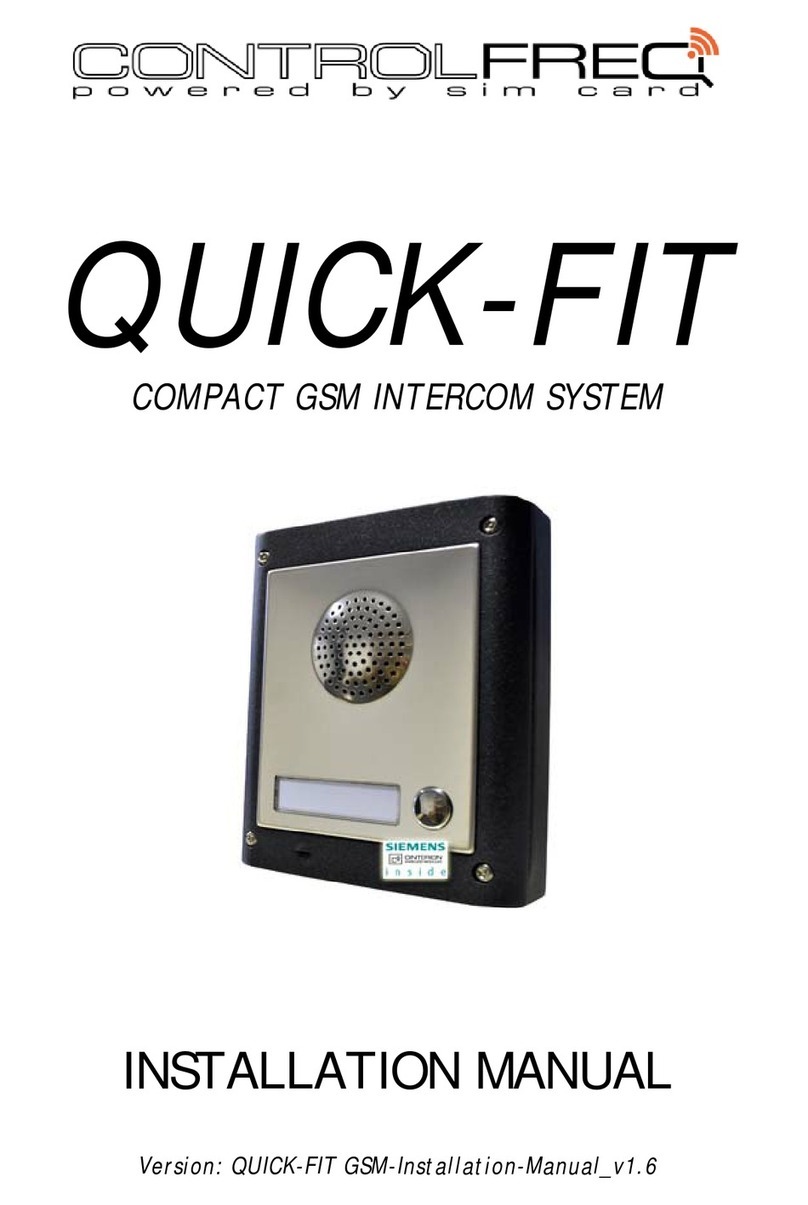
Contents TOC \t "Naslov 1, 1,Naslov 2, 2"
1. FOR YOUR SAFETY PAGEREF _TOC \H 5
2. INTRODUCTION PAGEREF _TOC1 \H 6
3. FEATURES AND APPLICATIONS PAGEREF _TOC2 \H 7
4. START UP PAGEREF _TOC3 \H 8
5. LED DISPLAY PAGEREF _TOC4 \H 9
6. CLEAR ALL PROGRAMMED DATA FROM K200 PAGEREF _TOC5 \H 10
7. CONNECTING DIAGRAM PAGEREF _TOC6 \H 11
8. PROGRAMMING K200 PAGEREF _TOC7 \H 12
9. THE K200 PARAMETERS PAGEREF _TOC8 \H 13
1.1. ALARM SUPPORT PAGEREF _TOC9 \H 13
1.2. OUTPUT MANAGEMENT PAGEREF _TOC10 \H 17
1.3. SECURITY LEVEL - SL PAGEREF _TOC11 \H 19
1.4. PREPAID CARD CREDIT AND VALIDITY INFORMATION PAGEREF _TOC12 \H 20
1.5. SET-UP PARAMETERS PAGEREF _TOC13 \H 22
1.6. SMS MESSAGES EDITOR PAGEREF _TOC14 \H 25
1.7. INTERCOM PAGEREF _TOC15 \H 26
1.8. ADDITIONAL CALL / TRADE BUTTON PAGEREF _TOC16 \H 28
1.9. DIRECT ACCESS BY ENTERING PIN CODE PAGEREF _TOC17 \H 30
1.10. DIRECT ACCESS BY ENTERING TEMPORARY ACCESS CODES – SPIN - VIA ILLUMINATED KEYPAD
PAGEREF _TOC18 \H 31
1.11. CALLER ID RECOGNITION (CLIP), CALLER-IN FUNCTION PAGEREF _TOC19 \H 32
1.12. EVENT LOGGING PAGEREF _TOC20 \H 34
1.13. SPECIAL SMS COMMANDS PAGEREF _TOC21 \H 35
10. PRINT-OUT OF THE PARAMETERS PAGEREF _TOC22 \H 37
1.1. RECEIVE ALL PARAMETERS (PALL) PAGEREF _TOC23 \H 37
1.2. CHECK SW REVISION (PSW) PAGEREF _TOC24 \H 37
1.3. CHECK SIGNAL QUALITY (PSQ) PAGEREF _TOC25 \H 37
1.4. RECEIVE TELEPHONE NUMBERS (PTN) PAGEREF _TOC26 \H 37
1.5. RECEIVE LINKS (PLN) PAGEREF _TOC27 \H 37
1.6. RECEIVE INPUT PARAMETERS (PIN) PAGEREF _TOC28 \H 37
1.7. RECEIVE INPUT FILTER VALUE (PID) PAGEREF _TOC29 \H 37
1.8. RECEIVE OUTPUT FILTER VALUE (POD) PAGEREF _TOC30 \H 37
1.9. RECEIVE DELAY BEFORE DIAL VALUE (PDD) PAGEREF _TOC31 \H 37
1.10. RECEIVE ACCESS TELEPHONE NUMBERS (PSL) PAGEREF _TOC32 \H 38
1.11. RECEIVE OUTPUT PARAMETERS (POS) PAGEREF _TOC33 \H 38
1.12. RECEIVE ALL PROGRAMMED SMS MESSAGES (P#) PAGEREF _TOC34 \H 38
1.13. RECEIVE SET UP PARAMETERS VALUE (PPA) PAGEREF _TOC35 \H 38
1.14. RECEIVE CREDIT PARS PARAMETERS (PCREF) PAGEREF _TOC36 \H 38
1.15. RECEIVE ALL CLIP PARAMETERS (PCLP) PAGEREF _TOC37 \H 38
1.16. RECEIVE INTERCOM CALL GROUPS PARAMATERS PAGEREF _TOC38 \H 38
1.17. RECEIVE TRADE BUTTON PARAMETERS PAGEREF _TOC39 \H 39




























